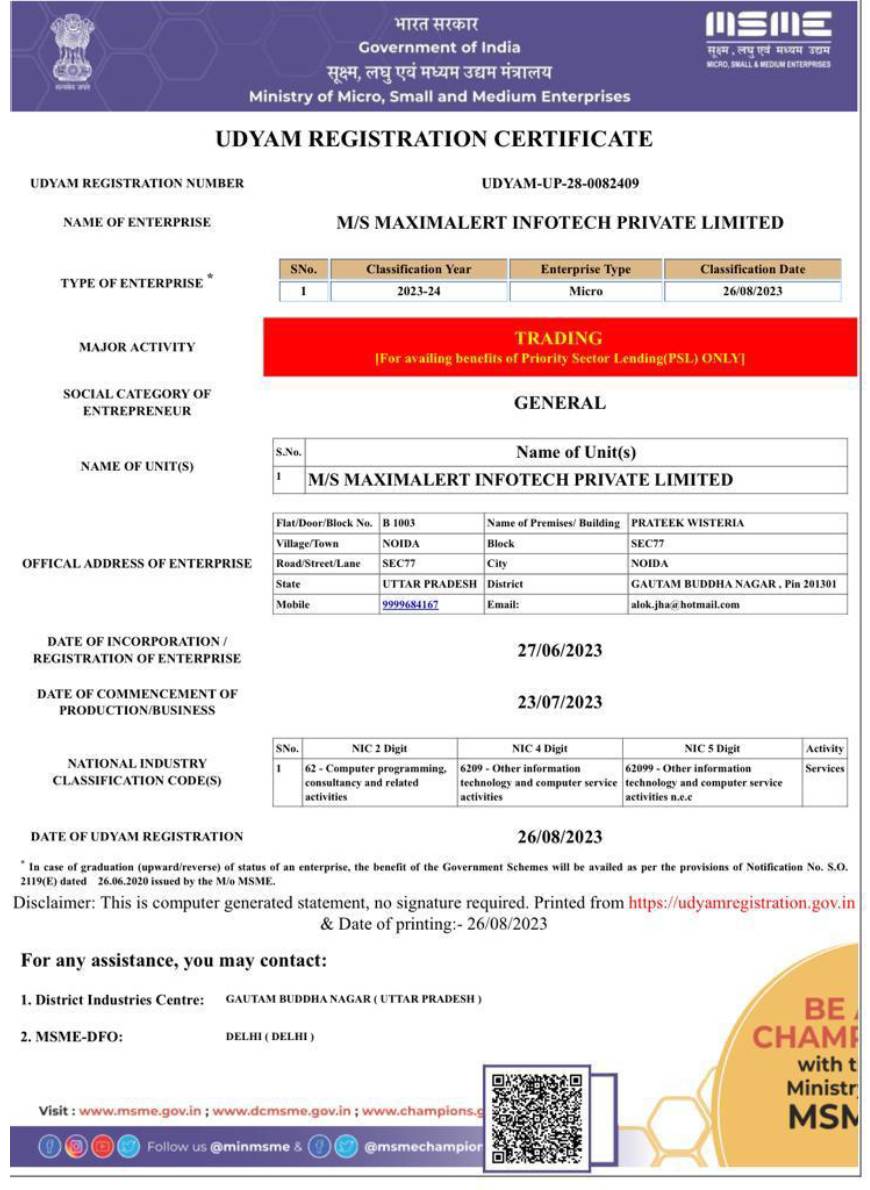Penetration Testing: A Crucial Shield in the Cyber Security Arsenal
Piyush Mishra
February 4, 2025
Visit Count : 59
In today's interconnected world, where businesses, governments, and individuals rely heavily on digital systems, the threat of cyberattacks looms large. Data breaches, ransomware attacks, and system disruptions can have devastating consequences, leading to financial losses, reputational damage, and operational paralysis. Against this backdrop, robust cyber security measures are no longer a luxury but a necessity. Among these measures, penetration testing, often referred to as "pen testing" or "ethical hacking," stands out as a proactive and invaluable tool for identifying vulnerabilities and strengthening defences.
Penetration testing is a simulated cyberattack performed on a computer system or network to identify security weaknesses that could be exploited by malicious actors. Unlike a real attack, pen testing is conducted with the explicit permission of the system owner and within a controlled environment. The goal is not to cause damage but to uncover vulnerabilities before they can be exploited by criminals. Think of it as a fire drill for your cyber defences, allowing you to identify and patch weaknesses before a real fire breaks out.
The Importance of Penetration Testing:
The dynamic nature of the cyber threat landscape necessitates continuous vigilance and proactive security measures. New vulnerabilities are constantly being discovered, and attackers are continually evolving their tactics. Traditional security measures, such as firewalls and antivirus software, while essential, are not foolproof. They can be misconfigured, bypassed, or rendered ineffective by zero-day exploits. This is where penetration testing comes into play, offering a crucial layer of defence by:
* Identifying vulnerabilities: Pen testing simulates real-world attack scenarios to uncover weaknesses in systems, applications, and network infrastructure. This includes identifying flaws in software code, misconfigurations, weak passwords, and social engineering vulnerabilities.
* Assessing the effectiveness of existing security controls: By attempting to bypass existing security measures, pen testing helps organizations understand their true security posture and identify gaps in their defences. It reveals whether security controls are functioning as intended and provides insights into their effectiveness against different attack vectors.
* Prioritizing security efforts: Pen testing provides a prioritized list of vulnerabilities based on their potential impact and exploitability. This allows organizations to focus their resources on addressing the most critical weaknesses first, maximizing the return on their security investment.
* Meeting compliance requirements: Many industry regulations and compliance frameworks, such as PCI DSS, HIPAA, and GDPR, require organizations to conduct regular penetration testing to ensure the security of sensitive data.
* Improving security awareness: The findings of a penetration test can be used to educate employees about security best practices and raise awareness of potential threats. This helps create a culture of security within the organization, empowering employees to become a part of the defence strategy.
* Reducing the risk of cyberattacks: By proactively identifying and addressing vulnerabilities, penetration testing significantly reduces the likelihood of successful cyberattacks. This helps organizations avoid the financial losses, reputational damage, and operational disruptions associated with security breaches.
The Penetration Testing Process:
A typical penetration test follows a structured methodology, which can be broadly divided into the following phases:
* Planning and Scoping: This phase involves defining the scope of the test, identifying the systems and applications to be assessed, and establishing the rules of engagement. It also includes gathering information about the target environment and defining the objectives of the test.
* Reconnaissance: This phase involves gathering information about the target organization and its systems. This can include passive reconnaissance, such as searching for publicly available information, and active reconnaissance, such as network scanning.
* Vulnerability Scanning: This phase involves using automated tools to identify known vulnerabilities in the target systems and applications. This provides a preliminary assessment of the security posture and helps prioritize further testing efforts.
* Exploitation: This phase involves attempting to exploit the identified vulnerabilities to gain unauthorized access to the target systems. This is where the pen tester simulates real-world attack scenarios to demonstrate the potential impact of the vulnerabilities.
* Post-Exploitation: This phase involves activities performed after gaining access to the target systems, such as escalating privileges, accessing sensitive data, and establishing persistence. This helps demonstrate the potential consequences of a successful attack.
* Reporting: This phase involves documenting the findings of the penetration test in a comprehensive report. The report should include a detailed description of the identified vulnerabilities, their potential impact, and recommendations for remediation.
Types of Penetration Testing:
Penetration testing can be categorized based on the tester's knowledge of the target system and the scope of the test:
* Black Box Testing: The tester has no prior knowledge of the target system and must rely on reconnaissance and publicly available information to identify vulnerabilities. This simulates a real-world attack scenario where the attacker has limited information about the target.
* Gray Box Testing: The tester has some knowledge of the target system, such as network diagrams or access credentials. This allows for a more focused and efficient testing approach.
* White Box Testing: The tester has complete knowledge of the target system, including source code, network configurations, and access credentials. This allows for a thorough and in-depth assessment of the security posture.
Penetration testing can also be categorized based on the target environment:
* Network Penetration Testing: Focuses on identifying vulnerabilities in the network infrastructure, such as firewalls, routers, and switches.
* Web Application Penetration Testing: Focuses on identifying vulnerabilities in web applications, such as SQL injection, cross-site scripting, and authentication bypasses.
* Mobile Application Penetration Testing: Focuses on identifying vulnerabilities in mobile applications, such as insecure data storage, broken authentication, and insufficient authorization.
* Wireless Penetration Testing: Focuses on identifying vulnerabilities in wireless networks, such as weak encryption, rogue access points, and wireless sniffing.
Tools Used in Penetration Testing:
Penetration testers utilize a variety of tools to perform their assessments. Some popular tools include:
* Nmap: A network scanner used for discovering hosts and services on a network.
* Metasploit: A framework for developing and executing exploit code.
* Wireshark: A network protocol analyser used for capturing and analysing network traffic.
* Burp Suite: A web application security testing tool.
* OWASP ZAP: An open-source web application security scanner.
The Importance of Ethical Considerations:
Penetration testing must be conducted ethically and responsibly. Penetration testers must adhere to a strict code of conduct and obtain proper authorization before conducting any tests. They must also ensure that their activities do not cause any damage to the target systems or disrupt business operations.
Penetration testing is an essential component of a robust cyber security strategy. By proactively identifying and addressing vulnerabilities, organizations can significantly reduce their risk of cyberattacks and protect their valuable assets. In an increasingly complex and interconnected world, penetration testing provides a crucial shield against the ever-evolving cyber threat landscape, enabling organizations to stay one step ahead of malicious actors and maintain a strong security posture. It’s not just a test; it’s an investment in the security and resilience of your digital future.
Case Study: Penetration Testing of a Hypothetical E-commerce Platform
This case study details a penetration test conducted on a hypothetical e-commerce platform, "BuySphere," to identify and address security vulnerabilities. The platform allows customers to browse and purchase products, manage their accounts, and track orders. The test aimed to simulate real-world attack scenarios and evaluate the platform's overall security posture.
1. Project Scope and Objectives:
The scope of the penetration test included the following systems and applications:
* Web Application: The BuySphere e-commerce website, including all functionalities like product browsing, shopping cart, checkout, user accounts, and administrative panels.
* Network Infrastructure: The network supporting the web application, including firewalls, servers, and databases.
* Mobile Application: The BuySphere mobile app for Android and iOS platforms.
The objectives of the penetration test were:
* Identify vulnerabilities in the web application, mobile apps, and network infrastructure.
* Assess the effectiveness of existing security controls.
* Determine the potential impact of successful exploits.
* Provide actionable recommendations for remediation.
2. Methodology:
The penetration test followed a structured methodology, encompassing the following phases:
2.1. Planning and Scoping:
The initial phase involved discussions with BuySphere's IT team to define the scope of the test, establish timelines, and agree on rules of engagement. A non-disclosure agreement (NDA) was signed to ensure confidentiality. The testing window was set for two weeks.
2.2. Reconnaissance:
* Passive Reconnaissance: Publicly available information about BuySphere, such as domain registration details, employee profiles, and news articles, was gathered.
* Active Reconnaissance: Network scanning was performed using tools like Nmap to identify open ports, running services, and operating systems. DNS enumeration was used to discover subdomains.
2.3. Vulnerability Scanning:
Automated vulnerability scanners like Nessus and OpenVAS were used to identify known vulnerabilities in the web application and network infrastructure. This provided a preliminary assessment of the security posture.
2.4. Exploitation:
Based on the vulnerability scan results, the penetration testers attempted to exploit the identified weaknesses. The following are some key findings and exploitation attempts:
* SQL Injection: During the reconnaissance phase, it was discovered that the product search functionality was vulnerable to SQL injection. By crafting malicious SQL queries, the testers were able to retrieve sensitive data from the database, including user credentials and order details.
* Cross-Site Scripting (XSS): A stored XSS vulnerability was found in the product review section. By injecting malicious JavaScript code into a product review, the testers could potentially hijack user sessions and steal cookies.
* Broken Authentication: The password reset functionality was found to be flawed. The password reset link did not expire after use, allowing an attacker to potentially gain access to user accounts.
* Insecure Direct Object Reference (IDOR): It was discovered that order IDs were sequential and predictable. By manipulating the order ID in the URL, the testers could access other users' order information.
* Mobile App Vulnerabilities: The mobile app was found to store sensitive data, including user credentials, in plain text on the device's storage. Additionally, the app was vulnerable to insecure data transmission over HTTP.
* Network Vulnerabilities: A vulnerability was identified in the firewall configuration, allowing access to an internal database server.
2.5. Post-Exploitation:
After gaining access through the SQL injection vulnerability, the testers simulated a real-world attack scenario. They were able to escalate privileges to the database server, access sensitive data, and potentially compromise other systems on the network. In the mobile app scenario, after gaining access to a user's account, the penetration testers were able to access the user's payment information.
2.6. Reporting:
A comprehensive report was generated, detailing the identified vulnerabilities, their potential impact, and recommended remediation steps. The report included:
* Executive Summary: A high-level overview of the findings and their potential impact on BuySphere's business.
* Vulnerability Details: A detailed description of each vulnerability, including its location, exploitability, and potential impact.
* Proof of Concept: Evidence demonstrating the successful exploitation of vulnerabilities, such as screenshots and code snippets.
* Remediation Recommendations: Specific and actionable recommendations for addressing each vulnerability.
* Prioritization: A prioritized list of vulnerabilities based on their severity and exploitability.
3. Results and Remediation:
The penetration test uncovered several critical vulnerabilities that could have been exploited by malicious actors. BuySphere's IT team acted promptly to address the identified weaknesses. The following remediation actions were taken:
* SQL Injection: Input validation and parameterized queries were implemented to prevent SQL injection attacks.
* XSS: Output encoding was implemented to prevent XSS vulnerabilities.
* Broken Authentication: The password reset functionality was updated to ensure that password reset links expire after use.
* IDOR: Randomized and unpredictable order IDs were implemented to prevent IDOR vulnerabilities.
* Mobile App: Data encryption was implemented to protect sensitive data stored on the device. HTTPS was enforced for all communication between the app and the server.
* Network Vulnerabilities: The firewall configuration was updated to restrict access to the internal database server.
4. Lessons Learned:
The penetration test provided valuable insights into BuySphere's security posture and highlighted the importance of proactive security measures. The following lessons were learned:
* Regular Penetration Testing: Penetration testing should be conducted regularly to identify and address vulnerabilities before they can be exploited by attackers.
* Secure Coding Practices: Developers should be trained on secure coding practices to prevent common vulnerabilities like SQL injection and XSS.
* Security Awareness Training: Employees should be educated about security best practices, such as strong passwords and phishing awareness.
* Vulnerability Management: A robust vulnerability management process should be implemented to track and remediate identified vulnerabilities.
* Mobile Application Security: Mobile application security should be a key focus of security testing efforts.
5. Conclusion:
The penetration test was a successful exercise in identifying and addressing security vulnerabilities in BuySphere's e-commerce platform. By proactively addressing these weaknesses, BuySphere significantly reduced its risk of cyberattacks and protected its valuable assets. This case study demonstrates the importance of penetration testing as a crucial component of a comprehensive cyber security strategy. It emphasizes that security is an ongoing process, requiring continuous monitoring, testing, and improvement.




